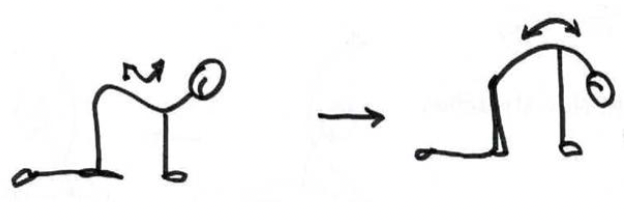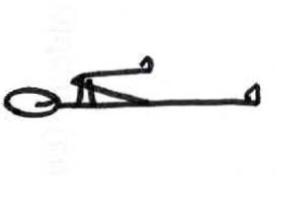Yoga Therapy for your Menstruation
- Ashley Hoffman
- Jun 3
- 3 min read
A nourishing, grounding practice to soothe cramping, calm the nervous system, and support the body through menstruation.
[Stick figure images and practices from learning materials with The Yoga Therapy Institute https://theyogatherapyinstitute.org/ ]

Understanding Menstrual discomfort:
It’s common to experience pain in the belly, lower back, or even the thighs during the early days of your cycle. It is a good practice to start to notice how you experience your period, do you tend to have a heavy flow? A painful one? or Both? Although PMS symptoms and period pain is normalized it doesn't mean its inevitable.
Normalized PMS symptoms:
Mood swings
Bloating
Fatigue
Cramps
Cravings
Headaches
Lifestyle Factors to help ease symptoms through the Luteal and Menstrual phases:
Warmth: Use a heating pad on your abdomen or lower back. This may be a time to skip the ice bath.
Hydration: Drink plenty of water.
Movement: Gentle movement or yoga can promote circulation and help encourage flow or slow it down depending on what you need.
Stress reduction: Chronic stress can worsen hormone imbalances, setting boundaries during this time can help prevent overworking.
Supportive Tools to use in Your Yoga Practice:
Heat: Warm water bottles or heating pads on the belly and back help relax muscles.
Blankets & Socks: If you feel cold or to add a light pressure on the body can feel nice.
Bolsters/Pillows: For restorative support. It can feel nice to elevate the legs and feet, and place a pillow under your knees.
Chair or wall space: For passive inversion like legs up the wall or rested at 90 degrees on a chair.
Optional: Yoni Mudra, calming breathwork, or guided visualization
Avoid excessive standing or flow-style practices that intensify the bleed and fatigue
Gentle movements and Pelvis Love
Cat & Cow (on hands and knees) - gentle undulations to release tension

Pelvic Clock (on back) - slow circular movements of your pelvis while lying down. knees bent hip width apart with feet on the ground.
Bridge Pose - supported or dynamic slow pulses.

Reverse Kickstand - Start in a table top, take one leg up and cross it over the other to feel a stretch of your outer glute.
Supine Twist - gentle and not deep, option to windshield wiper the knees.

Child’s Pose - knees wide, resting belly down with support, can add pillows between the legs.
Sphinx Pose with movement - soft rocking torso side to side or gentle cat cows

Quad Stretch (on belly) - one leg at a time, without strain in the back or lifting of the head. Release leg and gently shake the hips massaging them into the ground.

Puppy Pose - arms forward, hips elevated. Gentle inversion can help slow your heavy flow

Side Lying Banana Pose - lying your side, place a bolster or pillow under your hip so that your midsection is lifted gently creating an arch in one side of your body.
Reclined Knee-to-Chest - one leg at a time, pull your knee into your chest

Rocking - Lying on your back extend your arms and lift your knees into your hands, rock left to right.

Restore energy and gently slow the flow.
Supportive Savasana - bolster under knees and feet to elevate the legs.
Side Lying Savasana - Lie on your side and place a pillow under your top bent leg and foot. Place another pillow on your back to feel contained. Hold a warm water bottle.
Legs Up the Wall or Chair – Passive inversion

Yoni Mudra:
Pointer fingers and thumbs touch forming a triangle.
Place hands gently on your belly
Visualization:
Inhale: Imagine flushing your body with oxygen
Exhale: Relax as your body rests and takes in the nourishment of the moment
(Reinforce: you are already shedding and losing energy, reinforce a feeling of containing energy)
You got this.
When something feels off, and yoga is not enough..
Along with heart rate, temperature, breathing, and blood pressure, your period is a window into your health. Changes in periods can reflect stress, travel, under-eating, or underlying conditions. Often we accept symptoms as part of being a woman and never stop to ask questions. Even though it is normalized to have intense cramps, debilitating fatigue, and mood swings, it doesn't mean that is how are bodies are meant to function. Investigating your period and advocating for support is another way we can honor our bodies, instead of silencing its messages.
Don’t ignore:
Heavy, painful, or clotty periods
Missed periods (amenorrhea)
Irregular cycles
Debilitating PMS or migraines
Digestive issues tied to your cycle
Extreme fatigue or low mood mid-luteal
If you experience any of these, it’s worth consulting a doctor or health consultant.



Comments